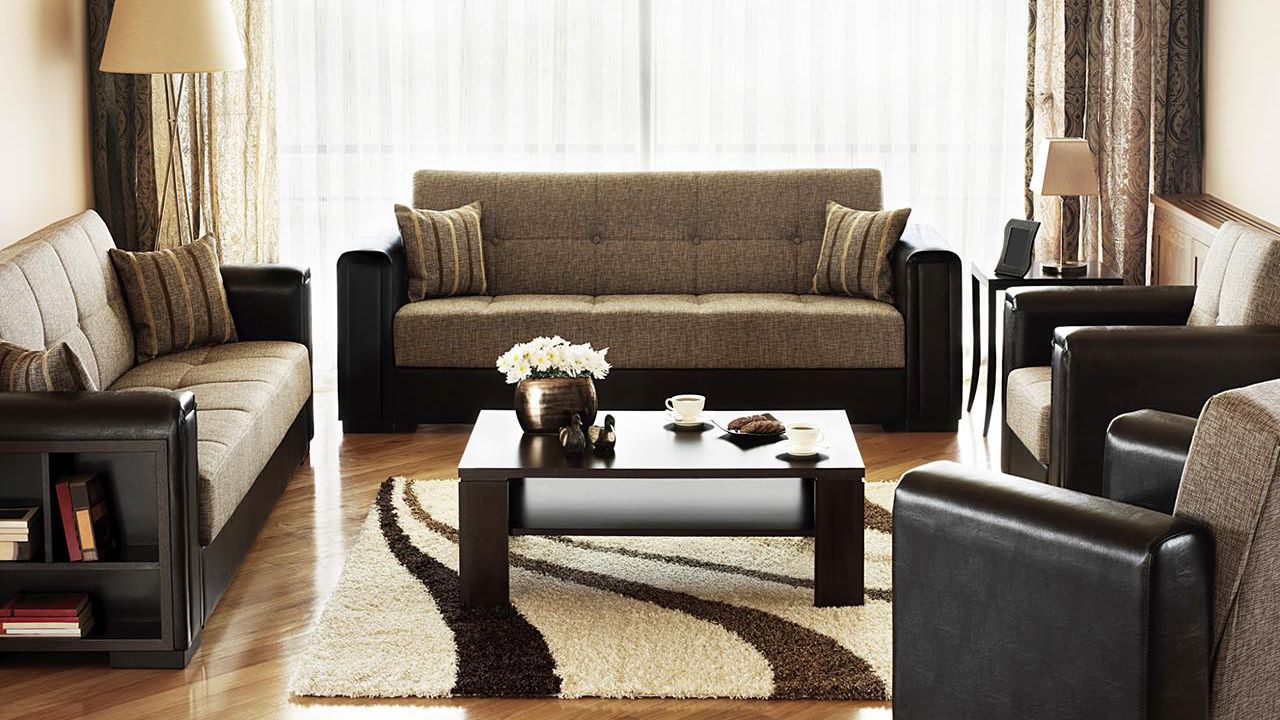Intro:
All homes benefit from decorating them with rugs, even small apartments. They add a high-end feel to the interior and have a long lifespan. For example, a wool rug lasts 50 years when you take good care of it.
A rug adds texture to a room, and texture is one of the seven elements of interior design. Texture balances the flat surfaces of a home’s walls, floor, and tables.
Depending on the direction you take with the tapestry, you can add a splash or keep it simple. Faux fur and animal-print rugs are a fun addition. You can always keep it classic with a solid rich red or neutral piece.
Rugs become a room’s anchor piece. They also provide warmth, reduce noise, and create comfort.
We provide the top seven tips for decorating with rugs.
1. Create Spaces
The average living room in the United States measures 15’ by 18’. A master bedroom averages 11’ by 15’ while the kitchen size continues to expand.
Common rug sizes include:
- 3’x5′
- 5’x8′
- 8’x10′
- 9’x12′
- 12’x15′
You can think of each rug as its own space, especially for homes that have an open floor plan. A series of tapestries help you create a bar area, reading zone, and entertainment spot in your living room.
You might think twice about adding a tapestry to the kitchen, but it can work. The dining room is another great place for the carpet.
2. Find Color Inspiration
When you decorate with a rug, the rug inspires the interior’s color scheme, or the rug matches it. Therefore decide if the rug is that room’s statement piece or supporting furnishing.
You’ll find tapestries in solid colors. Others have a detail in the corner. Then, they run the gamut on various patterns.
Start with the purpose of the rug purchase. It’s either an upgrade or a decoration makeover. If you’re searching for something different from your current design, employ the science behind color. Studies show that colors create moods.
If you want a low-maintenance color for high-traffic areas, consider grey, brown, navy, or burgundy.
3. Pick the Right Style for Your Home
Designer rug stores like Lawrence of La Brea carry an array of rug styles. Within each rug style, there is also an array of colors, sizes, and accents.
You can browse their modern collection online to understand the options. Then consider seeing them in person after narrowing them down to a list of a few.
The right style matters. You want to avoid second-guessing your pick after the fact. To acquire a piece that makes you happy, narrow down the style by color and pattern. If you prefer a solid color, eliminate the style options with patterns.
4. Pick the Right Size
Whenever you redecorate your home or upgrade a room, measure before purchasing furniture or furnishings. If you pick high-end furniture to match your luxury rug, remember that these pieces are heavy and large. Thus you want to get the measurements right on the first try.
It’s easier to pick a tapestry that’s smaller than a larger one. Sometimes you need to compromise the size for the perfect style. It doesn’t work the other way around.
If this predicament occurs to you, the preparation pays off when you need to make choices.
5. Use it As Art
Wool is the most common textile used to produce rugs. It’s the sturdiest textile used in tapestries and clothing. If you’re interested in a decorative piece to hang on the wall, consider rugs with a high percentage of satin woven into it.
The more satin woven into the piece, the flimsier it becomes. However, its beauty increases. Thus many homeowners hang the tapestries on the wall and display them as art pieces.
6. Complement the Furniture
It’s OK to place a luxury rug under the furniture including sofas, chairs, and tables. It’s scary to place a designer tapestry in the kitchen or dining area. Everyone knows that things get dropped in them too often, name food and drinks.
However, rugs complement a dining room table and chairs. Plus, they add cushions under your guest’s feet. Tapestries add something extra special to kitchens that complement the room.
Carpeting acts as an extension of the furniture.
7. Protect it with a Liner
After acquiring a designer rug for your home, protect it with a liner. Rug pads provide grip for the tapestry and protect the floor. They keep it from slipping on hardwood and marble floors. Therefore you’ll rarely need to put it back in its place.
Plus, the best liners require a modest additional investment.
Conclusion
A rug adds a decorative touch to all spaces. It’s also functional. The tapestry works in all rooms including the high traffic ones. To decorate with them, find the right size, color, and style. Make them the stars or set them up to complement the home’s interior design. To protect it and the floor, add a liner.

